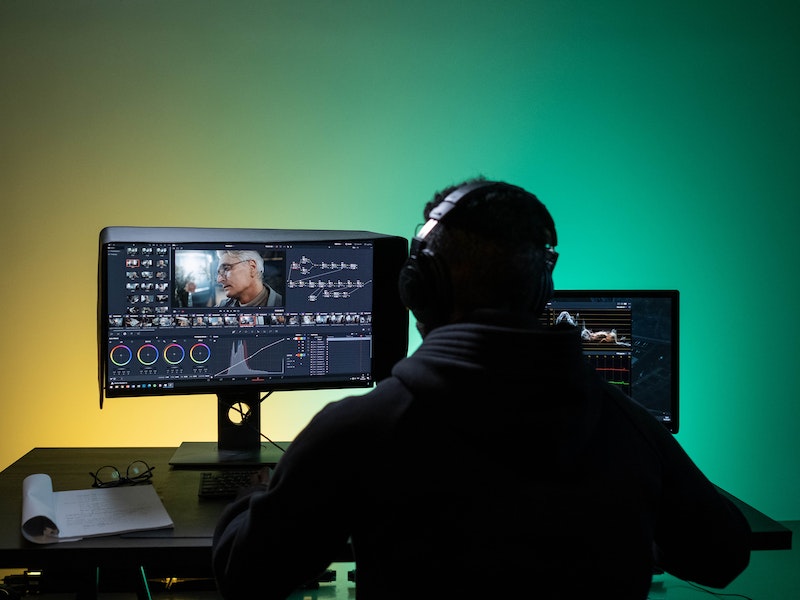When buying a new monitor or laptop, you don’t just walk up to the store and point at the one you want to buy. Even in a hurry, it is normal to ask about screens and the specs.
If someone happened to ask you whether you prefer full HD or full HD IPS, these are all screen display terms used in most screens for laptops, monitors, and TVs.
While screen terms may sound similar, for instance, FHD and HD, or OLED and QLED, they are quite different.
It is not unusual to get confused about these terms, which is why this article has details on full HD vs. Full HD IPS displays. Read on to get the basics and the details.
What Is Full HD Resolution?
To start with, the number of pixels an image has is measured in width and height. Full HD is the acronym for full high definition. When a monitor, laptop, or TV has full HD resolution its images feature 1920X1080p resolution.
Full HD is much improved compared to HD displays, and the difference is notable in the clarity and sharpness delivered in the images of each resolution. While Full HD is 1920X1080p, HD is 1280X720p, which makes full HD superior.
Full HD display is a recommended screen resolution for laptops for video editing, gaming, business laptops, and laptops for studying. It is also a great display for monitors used for the same purpose.
Full HD Alternatives
While Full HD is still an amazing display resolution, it is not to say that there are no alternatives to this display. Furthermore, there are higher display resolutions that are coming up and are taking over the display world. This includes:
HD
HD is the predecessor screen resolution of Full HD. It features a 1280X720p screen resolution. Some laptops and monitors still use HD resolution, but it is most commonly used in facetime cameras.
4K Resolution
Currently, 4K resolution is the buzz for display, especially in the TV world. It is also preferred for gaming monitors over Full HD. 4K resolution features 3840X2160p, which makes the images clearer and sharper than those delivered in full HD.
5K Resolution
This is a futuristic display resolution and no laptop has this kind of resolution. It features 5120X2880p. This resolution is perfect for creative professionals who need image clarity that is out of this world.

When to Get a Full HD Monitor
If you have an HD Monitor and are considering an upgrade, you should have a Full HD monitor among your options. A Full HD monitor has 1920x1080p which gives it 2 million pixels. Full HD monitors are still excellent at displaying great pictures and this is when you should get one:
When Upgrading From an HD Monitor
If you currently have an HD monitor that you want to upgrade, a full HD monitor is a fine step up. It is not a must for you to buy the newest resolutions such as 4k or 5k unless you want a big upgrade.
Full HD monitors are much better at display than HD monitors which makes them a perfect upgrade for an HD monitor.
For Gaming
Full HD delivers an amazing display for game enthusiasts. Full HD doesn’t disappoint in gaming, and it comes cheaper than UHD.
When Editing Videos
With video becoming popular over the years, video editing has become a popular hustle for millions of self-trained video editors, YouTubers, and content creators. Video editing requires good image clarity to get the best results.
A Full HD monitor is a good option for laptops for video editing, especially when used with an amazing video editing tool, for instance, adobe premiere pro or after effects.
See also: Budget laptop for adobe premiere pro
For Internet Surfing
Even browsing requires high pixels to give you clarity, especially on the images. If you are looking for a good laptop for surfing the internet, you should try one with a Full HD display.
What is IPS Display?
IPS is an abbreviation for in-place switching. It is a color technology used in LCD screens. Earlier color technology had flaws when it comes to viewing. The IPS technology developed in the 90s came in to solve the viewing issues displayed by other LCD color technology.
How Does IPS Technology work?
IPS alters how liquid crystals in LCD screens behave to deliver high-quality images and better viewing angles.
It gets the crystals to rotate parallel when voltage is applied, which allows light to pass through easily. This reduces the interference in light produced by the display, delivering clearer images.
IPS Alternatives
There are alternatives used in place of IPS when it comes to LCD screens. They include:
VA
This is a color technology used in LCD screens. It goes at an affordable price, delivers great image contrast, and is good for daily use. VA screens however are prone to slow performance.
TN
TN color technology is the cheapest of all LCD screens, it is also fast in performance and is great for gaming. Unfortunately, TN delivers poor image contrast and bad color, making it fall behind IPS in terms of performance.
LED
Led is also a color technology that uses a backlight to display images, instead of the panels used by IPS and LCD screens. Some of the best LED color technology include OLED and QLED.
Advantages of IPS over its alternatives
First, IPS is the best color technology for LCD screens. It is great for all screen purposes including gaming, editing, and general use. The technology is also great on TV screens. IPS is also the newer technology and has the best viewing angles.
When To Buy an IPS Monitor
If you are thinking of changing your monitor or simply getting a new one, this is when you need an IPS monitor:
If Your works station has direct sunlight
If your workstation or gaming station has direct sunlight, you need an IPS monitor to get the best images. An IPS monitor can give high-quality images even when your monitor is exposed to sunlight.
When you need wider viewing angles
With an IPS monitor, color distortion is eliminated. It delivers high-quality images at any viewing angle.
For Video Editing, and Other Purposes
The display quality of an IPS monitor is perfect for graphics design, video editing, and all other tasks a monitor does.
Although an IPS display comes with many advantages, it has some flaws like the high cost due to its advanced color technology. IPS screens also consume more power than other LCD screens.
Another deal breaker is that IPS is also not that great at gaming as it delivers slow responsiveness.
FHD vs IPS: Key Differences
Full HD and IPS are independent terms and do not directly conflict with one another. While full HD is display resolution and screen ratio, IPS is color technology.
It is possible to have a Full HD IPS screen, but it is not the best mix in some instances.
When it comes to color technology, IPS is great in some aspects such as viewing angles and contrast but falls behind in screen responsiveness. This means that it cannot be rated top or bottom of VA and TN in some instances. On the other hand, Full HD is better than HD but worse than 3k, 4k, and recently 5k.
Another notable distinction between full HD and IPS is when the two were invented. IPS is a millennial as it came in 1996 while Full HD falls in gen Z as it was invented in 2006.
Also, note that the alternative and direct competition for full HD is HD, 4k, and 5k while the alternative and direct competition for IPS is VA, TN, and LED.
While full HD is perfectly fine for gaming monitors, IPS is not recommended for gaming as it is slow to respond.

FAQs
Is Full HD Similar to IPS?
The main similarity between full HD and IPS is that both are found on the screen. Full HD and IPS are like an apple and mango. Both are fruits but are not similar in shape, texture, or taste. Full HD represents display resolution while IPS represents LCD color technology.
Is IPS the Best LCD?
IPS outshines other LCD technology in viewing angles. However, when it comes to screen responsiveness, it falls behind TN. IPS is the best LCD screen when the purpose of the screen matches its strengths.
Is IPS Good For the Eyes?
IPS delivers great contrast and high-quality images. The eyes do not strain to get image clarity, which makes it better for the eyes than most LED screens. IPS also minimizes eye strain when using your monitor in a naturally lit room.
Conclusion
After all the screen inventions, one needs to be aware of exactly what display technology has to offer. Full HD is still at the top of its game despite the competition from its alternative 5k and 4k. IPS on the other hand outshines VA and TN in some display aspects such as image contrast and viewing angles.
It is easy to want to compare IPS and full HD, but actually, the two can exist on one screen. They are different terms and use different technology to deliver the best in displaying images.

